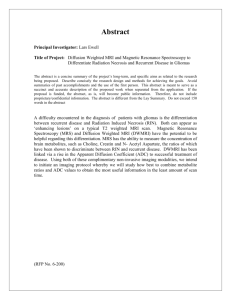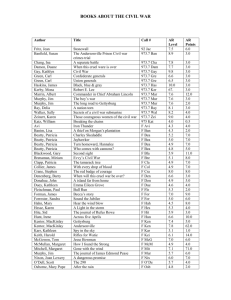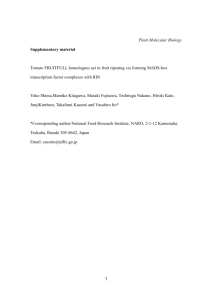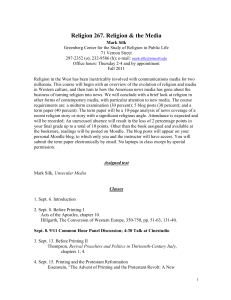Results - United States Association for Energy Economics
advertisement
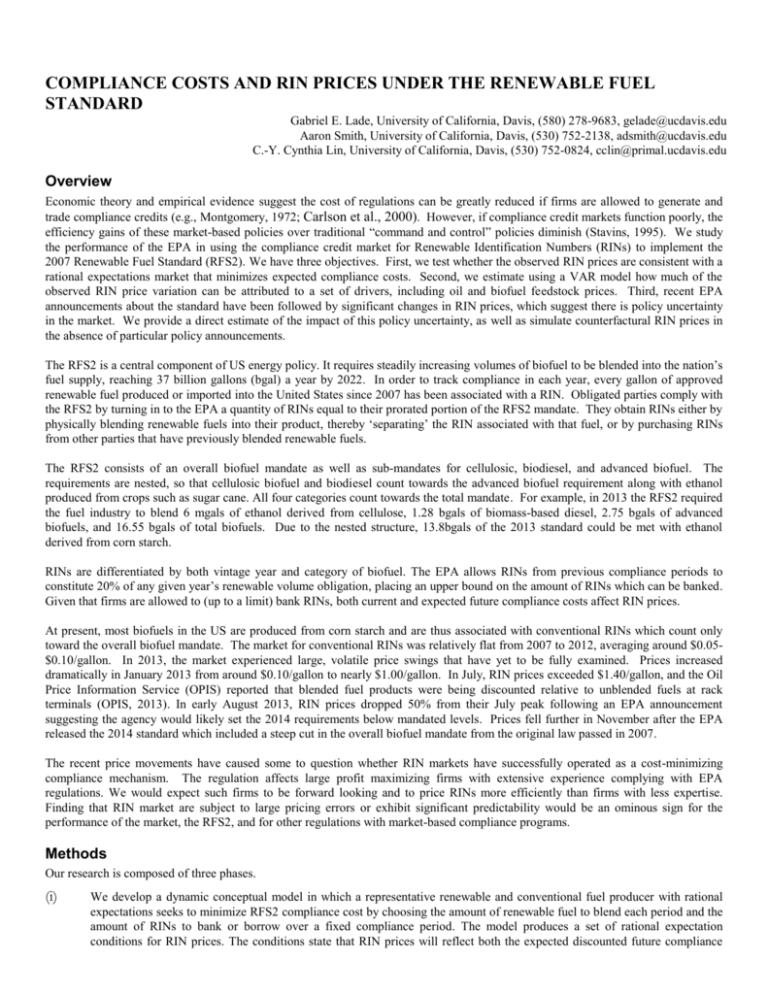
COMPLIANCE COSTS AND RIN PRICES UNDER THE RENEWABLE FUEL STANDARD Gabriel E. Lade, University of California, Davis, (580) 278-9683, gelade@ucdavis.edu Aaron Smith, University of California, Davis, (530) 752-2138, adsmith@ucdavis.edu C.-Y. Cynthia Lin, University of California, Davis, (530) 752-0824, cclin@primal.ucdavis.edu Overview Economic theory and empirical evidence suggest the cost of regulations can be greatly reduced if firms are allowed to generate and trade compliance credits (e.g., Montgomery, 1972; Carlson et al., 2000). However, if compliance credit markets function poorly, the efficiency gains of these market-based policies over traditional “command and control” policies diminish (Stavins, 1995). We study the performance of the EPA in using the compliance credit market for Renewable Identification Numbers (RINs) to implement the 2007 Renewable Fuel Standard (RFS2). We have three objectives. First, we test whether the observed RIN prices are consistent with a rational expectations market that minimizes expected compliance costs. Second, we estimate using a VAR model how much of the observed RIN price variation can be attributed to a set of drivers, including oil and biofuel feedstock prices. Third, recent EPA announcements about the standard have been followed by significant changes in RIN prices, which suggest there is policy uncertainty in the market. We provide a direct estimate of the impact of this policy uncertainty, as well as simulate counterfactural RIN prices in the absence of particular policy announcements. The RFS2 is a central component of US energy policy. It requires steadily increasing volumes of biofuel to be blended into the nation’s fuel supply, reaching 37 billion gallons (bgal) a year by 2022. In order to track compliance in each year, every gallon of approved renewable fuel produced or imported into the United States since 2007 has been associated with a RIN. Obligated parties comply with the RFS2 by turning in to the EPA a quantity of RINs equal to their prorated portion of the RFS2 mandate. They obtain RINs either by physically blending renewable fuels into their product, thereby ‘separating’ the RIN associated with that fuel, or by purchasing RINs from other parties that have previously blended renewable fuels. The RFS2 consists of an overall biofuel mandate as well as sub-mandates for cellulosic, biodiesel, and advanced biofuel. The requirements are nested, so that cellulosic biofuel and biodiesel count towards the advanced biofuel requirement along with ethanol produced from crops such as sugar cane. All four categories count towards the total mandate. For example, in 2013 the RFS2 required the fuel industry to blend 6 mgals of ethanol derived from cellulose, 1.28 bgals of biomass-based diesel, 2.75 bgals of advanced biofuels, and 16.55 bgals of total biofuels. Due to the nested structure, 13.8bgals of the 2013 standard could be met with ethanol derived from corn starch. RINs are differentiated by both vintage year and category of biofuel. The EPA allows RINs from previous compliance periods to constitute 20% of any given year’s renewable volume obligation, placing an upper bound on the amount of RINs which can be banked. Given that firms are allowed to (up to a limit) bank RINs, both current and expected future compliance costs affect RIN prices. At present, most biofuels in the US are produced from corn starch and are thus associated with conventional RINs which count only toward the overall biofuel mandate. The market for conventional RINs was relatively flat from 2007 to 2012, averaging around $0.05$0.10/gallon. In 2013, the market experienced large, volatile price swings that have yet to be fully examined. Prices increased dramatically in January 2013 from around $0.10/gallon to nearly $1.00/gallon. In July, RIN prices exceeded $1.40/gallon, and the Oil Price Information Service (OPIS) reported that blended fuel products were being discounted relative to unblended fuels at rack terminals (OPIS, 2013). In early August 2013, RIN prices dropped 50% from their July peak following an EPA announcement suggesting the agency would likely set the 2014 requirements below mandated levels. Prices fell further in November after the EPA released the 2014 standard which included a steep cut in the overall biofuel mandate from the original law passed in 2007. The recent price movements have caused some to question whether RIN markets have successfully operated as a cost-minimizing compliance mechanism. The regulation affects large profit maximizing firms with extensive experience complying with EPA regulations. We would expect such firms to be forward looking and to price RINs more efficiently than firms with less expertise. Finding that RIN market are subject to large pricing errors or exhibit significant predictability would be an ominous sign for the performance of the market, the RFS2, and for other regulations with market-based compliance programs. Methods Our research is composed of three phases. (i) We develop a dynamic conceptual model in which a representative renewable and conventional fuel producer with rational expectations seeks to minimize RFS2 compliance cost by choosing the amount of renewable fuel to blend each period and the amount of RINs to bank or borrow over a fixed compliance period. The model produces a set of rational expectation conditions for RIN prices. The conditions state that RIN prices will reflect both the expected discounted future compliance (ii) (iii) costs of the RFS as well as an option value. The option value is determined by uncertainty regarding future market conditions as well as the value of banking and borrowing restrictions on the industry in the event the restrictions bind. Using insights from our conceptual model, we assess the extent to which RIN prices match the predictions of our rational expectations model. Whenever RINs are banked, as has been observed since the inception of the RFS2 in 2007, a rational expectations equilibrium implies that any variables observed in period t should be uncorrelated with (interest-rate-adjusted) changes in RIN prices. Using daily RIN price data, we test whether period-t variables such as energy and agricultural commodity prices can predict future change in RIN prices. Significant predictability suggests that the market prices do not satisfy rational expectations, and that the market is inefficient in the sense that price movements are predictable and arbitrage opportunities exist. We estimate a structural vector autoregression (SVAR) model, specifying a recursive relationship between oil, corn, soybean oil and sugar futures prices and biodiesel, advanced and conventional ethanol RIN spot prices. Using our SVAR, we estimate impulse response functions to understand how RIN prices react to shocks in other markets. In addition, we decompose historically RIN prices to understand the relative importance of shocks on other markets on RIN prices, as well as estimate the effect of policy announcements on RIN prices. Results We find no evidence that competing forecast models of RIN price changes outperform a random walk model. The finding support the hypothesis that RIN prices as reported by OPIS (a main industry source for the credit prices) follow rational expectations and are efficiently priced. Results show that shocks in underlying agricultural markets affect RIN prices in ways predicted by our conceptual model. While shocks to oil prices do not have a large effect on RIN prices, shocks to corn markets have a positive and sustained effect on conventional ethanol RIN prices. In addition, we find evidence that shocks to sugar markets increase advanced RIN prices, and shocks to soybean oil increase biodiesel RIN prices. While commodity prices have had large effects on RIN prices, policy announcements, which affect the future expected costs of RINs, have had the largest effect on prices to date, and have led to substantial changes in the total value of the market. While commodity price volatility, particularly corn and soybean oil price increases due to the 2013 drought in the Midwestern United States, have had large effects on biodiesel and conventional RIN prices, the largest price driver in the conventional RIN market has been policy announcements from the EPA. The announcements act to increase or decrease the expected discounted future costs of the program. Conclusions The scope of the RFS2 makes it important to assess the performance of RIN markets as well as the EPA in implementing the program. Our paper contributes both towards the literature studying the RFS2, as well as to the sparse but growing literature on the efficacy of markets for tradable credits as tools for implanting regulations. Markets for tradable credits are a crucial component of many current and proposed government policies, including other fuel programs such as California’s Low Carbon Fuel Standard, numerous cap and trade programs such as the EU Emissions Trading System and the United States NOx Budget Trading Program, import quota markets under trade restrictions, and fishing quotas regulating total allowable catch. Previous studies of credit markets under other programs have typically employed analytical and econometric techniques to study credit prices.1 Our paper discusses and provides examples of readily accessible time series econometric techniques which can be employed to better understand compliance credit price dynamics. References Carlson, C., D. Burtraw, M. Cropper, and K. Palmer (2000). Sulfur-dioxide control by electric utilities: What are the gains from trade? Journal of Political Economy 108(6), 1292-1326. Joskow, P., R. Schmalensee, and E.M. Bailey (1998). The market for sulfur dioxide emissions. The American Economic Review 88(4), 669-685. Montgomery, David. (1972). Markets in Licenses and Efficient Pollution Control Programs. Journal of Economic Theory. 5, 395-418. Newell, R., J. Sanchirico, and S. Kerr (2005). Fishing quota markets. Journal of Environmental Economics and Management. 49(3), 437-462. Oil Price Information Service (July 8, 2013). Skyrocketing RINs Prices Cause Rack Pricing Wars. Schennach, S. (2000). The economics of pollution permit banking in the context of Title IV of the 1990 Clean Air Act Amendments. Journal of Environmental Economics and Management. 40, 189-210. Stavins, R. (1995). Transaction costs and tradable permits. Journal of Environmental Economics and Management 29, 133-148. 1 Examples include Joskow et al. (1998), Carlson et al. (2000) and Schennach (2000) who study the US sulfur dioxide tradable permit system, and Newell et al. (2005) who study prices for quota licenses under a prominent fishing ITQ program.



